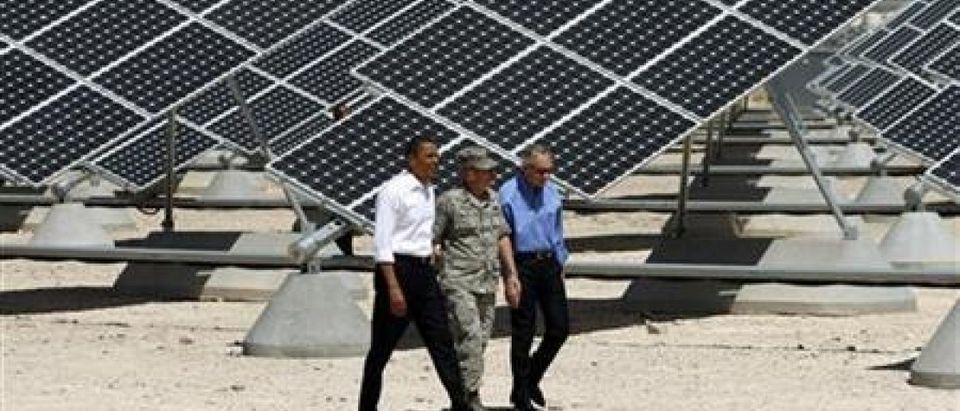New federal data shows a potent greenhouse gas — that’s also a byproduct of solar panel construction — is on the rise.
Nitrogen trifluoride (NF3) is a key chemical agent used to manufacture photovoltaic cells for solar panels, suggesting government subsidies and tax credits for solar panels may be a driving factor behind the 1,057 percent in NF3 over the last 25 years. In comparison, U.S. carbon dioxide emissions only rose by about 5 percent during the same time period.
NF3 emissions have rapidly increased in Asia as well due to its rapidly growing solar panel market, and researchers think that many nations are under-reporting their NF3 emissions by roughly a factor of 4.5.
NF3 emissions are 17,200 times more potent than CO2 as a greenhouse gas over a 100 year time period.
“By itself, NF3 is not going to create a climate problem,” Dr. Michael Prather, an earth science professor at the University of California, Irvine who tracks NF3 emissions, told Seeker. “But everything adds up. Everybody should be paying attention to the pieces that all add up.”
Solar panels aren’t the only source of NF3, which is also used to produce semiconductors and LCD flat screens.
The 1,057 percent increase in US annual emissions of NF3 from 1990 to 2015 compares to an increase of 5.6 percent in carbon dioxide emissions, according to EPA data in a recently-published draft of a new report
Other research, which did not consider NF3, looked at 40 years of CO2 emissions from solar panels, including those caused by their production, then subtracted that by the amount of CO2 they prevented from being emitted. They found many older solar panels would take a decade to lead to a net emissions reduction, which can be longer than their lifespan. They also concluded that the current generations of panels will probably only just reduce net emissions over years.
The study concluded that the solar industry has been “a temporary net emitter of greenhouse gas emissions” and more modern solar panels have a smaller adverse environmental impact than older models. Scientists estimated that by 2018 at the latest, the solar industry as a whole will have a net positive environmental impact.
The research was financially supported by the Technology Foundation STW, which is a governmental agency of the European Commission.
America’s CO2 emissions have fallen by more than 12 percent since their high in 2005. U.S. CO2 emissions likely declined by 2.6 percent in 2015 and are expected to fall an additional 1.7 percent this year.
Send tips to andrew@
All content created by the Daily Caller News Foundation, an independent and nonpartisan newswire service, is available without charge to any legitimate news publisher that can provide a large audience. All republished articles must include our logo, our reporter’s byline and their DCNF affiliation. For any questions about our guidelines or partnering with us, please contact licensing@dailycallernewsfoundation.org.


